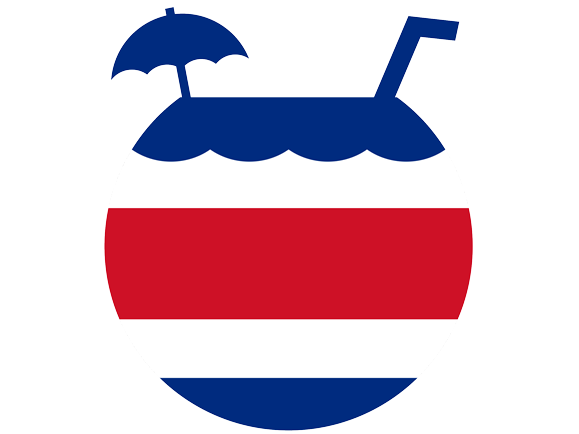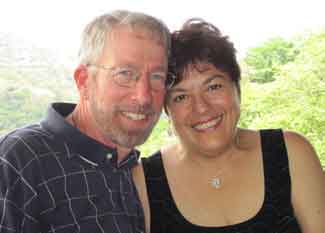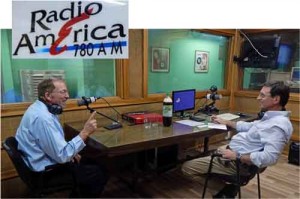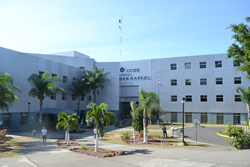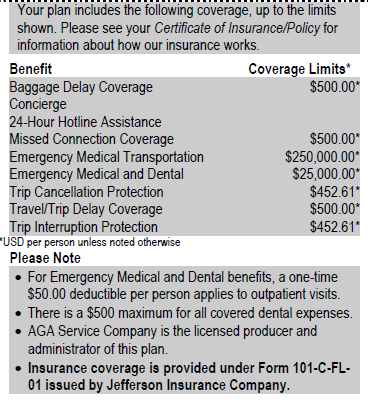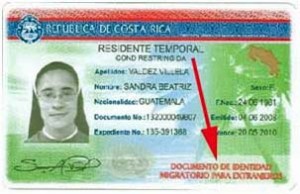Cost of Living, Life in CR
Retire for Less Newsletter – September 26, 2014
Welcome to our RetireForLessInCostaRica.com Newsletter!
In Our Special Health Care & Health Insurance Issue:
- Costa Rica’s Caja: How it Works
- Our Caja Experience, by Norman and Frankie Siegel
- In the Mailbag: Regarding Getting Residency in Costa Rica and Joining the Caja
- New Development: Make Caja Appointments by Phone
- Update: Travel with Confidence When You Purchase Travel Insurance
- For U.S. Citizens: How the Affordable Care Act Affects Expats
- Our Ultimate Healthcare Tour of Costa Rica
- Applying for Permanent Residency in Costa Rica
Costa Rica’s Caja: How it Works
by Paul
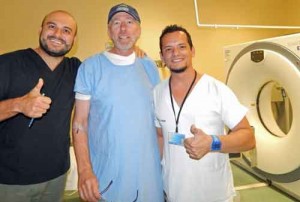 Many people ask us about the Caja because we know it so well. We know it well because we use it extensively. Gloria had surgery in the Caja, and I’ve had a multitude of procedures done within the Caja. Additionally, we use our local clinic (EBAIS) for our basic, everyday health concerns. Consequently, we know how the system works and we’re going to share some of that information now.
Many people ask us about the Caja because we know it so well. We know it well because we use it extensively. Gloria had surgery in the Caja, and I’ve had a multitude of procedures done within the Caja. Additionally, we use our local clinic (EBAIS) for our basic, everyday health concerns. Consequently, we know how the system works and we’re going to share some of that information now.
If you’re truly interested in CCSS (Caja), watch this video of Paul getting a CT Scan through the Caja. It will show you what’s possible.
Who should use the Caja?
I would say you should use the Caja if:
- Your funds are limited.
- You’re paying into it. After all, you are required by Costa Rica law to join the Caja if you become a legal resident, so if you’re paying for it, why not use it?
- You want to defray some of your prescription costs by getting them through the Caja (generics only are available).
- You have a medical emergency and need to go to the emergency room (Urgencia).
- You want to learn the public healthcare system and integrate into the community.
Using the Caja has an extra benefit. I call it “Integration 102.” (You can find out what I’m talking about in this article.) When you are there, waiting, it will be just you and lots of Ticos. It’s a great way to practice your Spanish – though someone almost always speaks English. Here is our late friend, Jo Stuart’s, take on it:
Waiting to see the doctor at Hospital Mexico
by Jo Stuart
A nice gentleman gave me his seat, telling me to ‘sit down’ in English. It turned out that he had seen my Trader Joe’s bag and knew I was from the States…He was there with his father-in-law, a handsome man of 84, waiting to have his pacemaker checked. The father-in-law was a Tico, born in the U.S. having returned to Costa Rica…We compared the health services in the U.S. and Costa Rica and agreed that one reason the waiting rooms were so crowded was that no Tico comes alone. They’re accompanied by at least one, and usually more, family members. And given the sympathetic doctors and nurses here, many people take advantage of it and come in with minor ailments. ‘We’re sissies,’ the older gentleman said. I pointed out that life expectancy in Costa Rica has surpassed that in the U.S. and maybe taking care of minor ailments was a form of preventative medicine.”
From Butterfly in the City, page 153-154. Used with permission.
A good acquaintance of mine does everything privately. His advice is to look at your Caja payment as a tax, just for the right to live here. Other expats use it for some of their medications, but go no further than that. And some expat residents don’t use the Caja at all.
If you were to ask 10 expats what they thought about the Caja, 9 would give it a “thumbs down.” They may have heard bad things about it or had a negative experience themselves. But the Caja has been around since 1942 and, obviously, they have done some things right, as the Costa Rican lifespan is one of the highest in the Western Hemisphere.
Like many Ticos, and some expats, we use a combination of the Caja and the private medical care, when necessary. Even though it was rated highly by the World Health Organization, Costa Rica’s Caja is socialized medicine and socialized medicine has its limitations. Still, for many things, it’s more than adequate.
I asked Gloria once why she likes it and here is what she said. “In the States, even though I had health insurance, I always worried that something medically would happen and the insurance company would find a way not to pay. I was afraid of incurring huge medical bills, and that I could lose my house and everything else I owned. Here, in Costa Rica, I don’t have that fear. And neither do the Ticos. It’s just not part of their consciousness.”
My Recent Experience
Like in the U.S., as a doctor’s patient, you need to be proactive about your health and ask the doctor questions about your tests, medications, and if you should be referred up the ladder to a specialist.
As you can see by the graphic to the right, I started the process at the local EBAIS and was referred to our local Caja hospital in San Ramon. The specialist I saw referred me to another specialist at Hospital Mexico. At Hospital Mexico, I was told to go to the transplant clinic down the block. The transplant clinic took one look at the referral and said that I needed to see Dr. Moreno at the Caja hospital in Alajuela. Once there, I was referred to Dr. Moreno’s office at Clinica Rodriguez in Alajuela. The whole process took just four months and a lot of running around. Along the way, I accumulated four expedientes (patient files) and, over the next several months, I traveled between the hospital (where all of my tests were done) and Clinica Rodriguez (where I saw Dr. Moreno) in Alajuela. So, not only do you need to be proactive, you need to be persistent and patient!
A few quick tips
- Expediente means “records.” It’s your file, usually paper, with all of your medical records. You’ll have an expediente at every hospital or clinic you go to. As you get referred “up the ladder,” each medical facility will create a new expediente for you. You start your expediente at the Afiliación window, which is located at all major hospitals and clinics.
- Ask for your file and make copies of everything – blood tests and other test results, anything you consider important. You can put the copies in your expedientes at other clinics and doctor’s offices, to keep them up to date. Plus, it may save you from getting a new test if the results are recent. It’s your health, so be proactive.
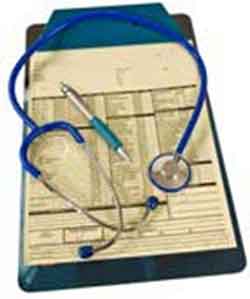
- Your specialist may refer you to other specialists; you don’t need to start over each time at your local EBAIS. Once you get to your final specialist, he will eventually discharge you when the outcome has been reached.
- Your local EBAIS is where healthcare starts, so go there personally. If you don’t know where it is, ask a neighbor. (You can get preliminary EBAIS location information at this website: http://www.ccss.sa.cr/sisw/directel/externo/ebais.php.) Get your first expediente. And get to know the clinic staff as we have. The EBAIS usually has a receptionist, nurse, visiting nurse, pharmacist, and your primary physician. You can’t choose your doctor but you will normally have the same doctor each time you go (with the exception of vacations and personal days).
- Most districts in Costa Rica’s 81 counties have at least one EBAIS, though this can vary slightly, According to population, some districts have more than one EBAIS. This is how Costa Rica brings health care to the people.
- The full name of the Caja is “Caja Costarricense de Seguro Social (CCSS).
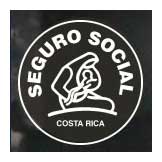
The Caja is something you can do if you need or want to. If you don’t speak or understand Spanish, look up some key words to describe your symptoms and concerns; you could also bring along a Spanish-speaking friend whom you trust.
When might you NOT use the Caja?
- When time is a factor. If you’ve been diagnosed and you’ve determined that you must be treated immediately or very soon, it may be better to go privately.
- If you’ve got plenty of money, you can afford INS, Costa Rica’s private health insurance, or an international health insurance policy. All of the private hospitals and clinics will readily accept it. Some hospitals even have their own medical plans.
- If you are already using the Caja, have a diagnosis, and they give you a date for non-emergency surgery months or years in advance, you may be forced to go privately if your symptoms are severe.
This is why we say, have a reserve fund for emergencies. Your monthly Social Security or pension may not be enough to cover emergencies, health or otherwise. Also, if you are from the U.S., keep you Medicare B if you can afford to do so. You could get your procedure done on a visit home. You never know what will happen and it’s just one more way to be prepared.
Related Articles:
- Integration 102 – Speaking Up at the Hospital
- The EBAIS – Where Healthcare Starts
- How do you define happiness?
- Have a Reserve Fund for Emergencies
Our Caja Experience, by Norman and Frankie Siegel
We recently met Norman and Frankie in Alajuela when we were having lunch at Jalapeños Restaurant, a favorite with both expats and Ticos. They recognized us from photos on our website and introduced themselves. They arrived in Costa Rica just this year, quickly applied for residency and joined the Caja. They agreed to share their recent experiences using the Caja, below:
Our Caja Experience
We are a retired couple, both over 75 years young, and very young at heart. We arrived in Alajuela, from Atlanta, Georgia on January 28, 2014, having rented an apartment sight-unseen, only pictures online. I might add, we had never visited the country either. We lucked out, and found a great place.
Unfortunately, our meds ran out after 3 months, and we had to start buying them at the Farmacia, and, of course that was a shock. Meds are not cheap here. At last, after only 6 months of nail-biting, we became legal residents and were members of CAJA.
Our experience has been great so far. We got our Caja cards (carnets) on Monday, and immediately went to see the doctor at our local EBAIS (clinic). We were told we needed an appointment and we figured we would have to wait, as we had been told of the long lines and waiting times. Our appointment was for two days later.
We arrived a few minutes early, and were taken right away. The nurse did a blood pressure check, height and weight and spoke to us in good English. We were told to wait in the room with others for the doctor. We waited about 20 minutes, and she (the doctor) called us in. She spent almost an hour with each of us, taking history and checking what meds we needed to refill. She spoke perfect English also. Before leaving she gave us referrals to specialists that we needed to see, as well as referrals for blood work and EKGs.
I had a concern which I discussed with the doctor. She did an exam and told me what she thought it was, but that she would like me to see a specialist. She wrote out a referral for me and I had to take it to San Rafael Hospital building in Alajuela for an appointment with the specialist. I got there, and there was a line about 75 people long. But because of my gray hair, I was told to go to the 2nd window, which was empty. A young lady, who also spoke some English, made the appointment for me, but it wasn’t to be for 4 months. I questioned it and told her that I needed to see the doctor sooner. She kind of smiled, and told me that, “On Wednesday and Thursday, you can come in and wait in front of the windows at 7 AM, and if they have a cancellation, or there is room, the doctor will fit you in.” That was on a Wednesday, so on Thursday at 7 AM, we were waiting in front of the windows. After we waited about 45 minutes, the young lady came out to me and said, “The doctor will see you at door number 8 down the hall.” When we got there, there were about 30 people waiting already, but about 35 minutes later, the doctor called me into the room and did an examination. Fortunately, it was nothing serious. His words to me (in English) were “I’m not worried.” He ordered some additional tests, and said, “See you in six months.”
Our CAJA experience so far has been one of complete satisfaction. I would say I have waited for doctors or appointments for a lot longer period of time than we have so far here in Costa Rica. We love it.
To be continued.
PURA VIDA
Norman and Frankie Siegel
In the Mailbag
Our “Questions and Answers” column in the last newsletter generated a lot of response. The topic was “Getting Residency in Costa Rica and Joining the Caja.” You can read the original question and answer here. Thanks to everyone who shared their thoughts.
Tom B. wrote:
It’s not so easy to automatically leave and enter CR on a 90 day tourist visa. Many people are getting less time and are being required to have an air ticket to their home country. Those who are crossing into Panama have had the most problems, but who knows what the future will bring?”
M.A. wrote:
Permanent residency has NO work restrictions…you do not need work permits. You can apply for work permits when you have temporary residency. Visa extensions can be any length of time with maximum of 90 days for any given stay in country. For example, I was given a 10-day visa at Panama border. I applied for visa extension without a lawyer’s help and was given another 80-days. If you have a 50-day visa, you can apply for extension and get another 40-days. You do not really need a good reason other than you want to stay in country longer. There is also a medical visa if you are too ill to travel….has to be very well-documented by doctors, hospitals, etc. that you are unable to travel.”
We asked our Costa Rica residency expert, Javier Zavaleta, about the benefits of permanent residency. Here is his response:
As a temp resident, say as a Pensionado, every time you go to renew your cedula for 2 years you have to provide a letter indicating your pension is still valid and being paid. Permanent residents have NO income requirement. So you never have to get another pension letter from the embassy or a former employer which, in some cases, can be difficult.
A temp resident must be mindful of the mandatory one day per year in-country requirement. Permanent residents have no specific in-country requirement but are still expected to spend at least a day per year in CR
Permanent residents are entitled to offer residency as dependents to parents with no income requirement (like it’s done in the U.S.) Not available to temp residents.
In general, being a permanent resident makes life easier, with fewer rules. AND it gives a long-term resident the feeling of being accepted, of truly belonging in Costa Rica.”
And, finally, we received the following comment from Diego R.:
This is part of your answer to the question regarding health insurance until you become a resident: “If something major would happen and you needed to go to the emergency room, it is mandated by law that you will be treated.”
Factually, you are correct. However, do you realize this is the equivalent of not paying for major medical insurance? In your experience you were fortunate and did not need major medical care. If you had it would have been paid for by the hardworking Ticos because you have not contributed to the medical system up to that point. Many Ticos are aware of this and it contributes to prejudices against Ex-pats who are viewed as moving here to take advantage of the medical system which is highly overburdened. The responsible thing to do is follow the other advice in your answer regarding paying for insurance through INS, etc.
Most people in the US are not open to illegal immigrants receiving medical care covered by the taxpayers. You are now advocating this in Costa Rica whether you intended to or not…. I follow you site because I think you and your husband are very nice people and I have learned a lot from you sharing your experiences in Costa Rica. Please feel free to share my comments. You are in a position to shape perceptions which holds a lot of responsibility.”
Thank you, Diego, for your email and your honesty.
Diego also suggests our readers take a look at the following article, published in A.M. Costa Rica’s Retire NOW section, for more information: Cheap medical care for expats is not as easy as some say.
Related Articles:
- Paul’s Monthly Tip to Live for Less in Costa Rica: Save Thousands on Private Medical Care
- Paul’s Monthly Tip to Live for Less in Costa Rica: Visiting the Dentist
- Paul’s Monthly Tip to Live for Less in Costa Rica: Join the Caja, Costa Rica’s National Medical System
New Development: Make Caja Appointments by Phone
The Tico Times reports:
Good news for users of Costa Rica’s public health care system: Starting in August, the Social Security System, or Caja, will have a new link on their website (www.ccss.sa.cr) for patients to schedule appointments online. In a first stage of the project, the digital service will allow patients to make appointments at 40 of the Caja’s 103 hospitals and community clinics, or EBAIS, throughout the country. The remaining hospitals and clinics will be brought online shortly after, according to José Manuel Zamora, a coordinator of the Caja’s Digital Medical Records project. Read the entire article here: http://www.ticotimes.net/2014/07/30/public-hospitals-to-offer-online-appointment-scheduling-in-august.”
Update: Travel with Confidence When You Purchase Travel Insurance
While we are on the subject of health insurance, we have an update to our article about purchasing travel insurance. You can read the entire article at this link: Travel with Confidence When You Purchase Travel Insurance. But for this update, here’s a brief recap:
For our recent two-week trip to the U.S., we opted to purchase travel insurance when we were buying our airline tickets on American Airlines. Shortly thereafter, we received a policy from Allianz Travel Insurance which outlined our coverage and confirming the prices we paid — all of $61.10 for both of us. Here is what our policy covered: At the time, we thought it was a great deal, not realizing that we would soon need to actually use it.
We were pleased with the coverage limits in general, but, to be frank, we were most interested in the emergency medical coverage. Should something happen during our visit to Baltimore, Paul could use his VA benefits and was also covered under Medicare Part A, but I had no other health insurance. Here in Costa Rica, medical costs are more reasonable and we are also covered under the Caja, the national medical system. But if something happened while we were in the States, we knew that it could end up being very expensive if we had to pay out-of-pocket. Purchasing this travel insurance policy gave us peace of mind, and the low cost made it a bargain, even if we never had to file a claim.
As for the update, we have finally received reimbursement from Allianz but it took some time, effort, and expense. Over the last five months, we have been in contact with their customer service department on numerous occasions. Even though we specified on our claim paperwork that we live in Costa Rica and do not have any health insurance in the United States, they needed proof. We sent them copies of my passport with entry stamps, residency card (cedula), Caja card (carnet), and even my Costa Rica drivers license. But this was not enough. They required a notarized letter (which I wrote) stating that I have no health insurance in the U.S. We had to take the letter to the U.S. Embassy to have it notarized, which cost $50 and several hours of our time. It took me a while to realize that the notarized letter becomes a legal document of sorts in case they were to find out at a later date that I did have have health insurance (I don’t). If I were lying about it (I’m not), they could use the notarized letter to get their money back. Once I submitted the notarized letter to them, they promptly issued a check to pay my claim. It is now my responsibility to pay the providers. One good thing that came out of it is that I still have the original of the notarized letter in case I should need it again at a later date. Here’s how the numbers all shook out: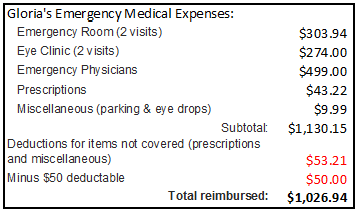
Related Article:
For U.S. Citizens: How the Affordable Care Act Affects Expats
Our experience with purchasing travel insurance for our trip back to the States led us to check out the specifics of the Affordable Care Act (ACA). The ACA has an “individual shared responsibility provision” which is defined as follows:
What is the individual shared responsibility provision? Under the Affordable Care Act, the federal government, state governments, insurers, employers and individuals are given shared responsibility to reform and improve the availability, quality and affordability of health insurance coverage in the United States. Starting in 2014, the individual shared responsibility provision calls for each individual to have minimum essential health coverage (known as minimum essential coverage) for each month, qualify for an exemption, or make a payment when filing his or her federal income tax return.”
Here is the part of the individual shared responsibility provision that specifically concerns those of us who are living abroad:
Are US citizens living abroad subject to the individual shared responsibility provision? Yes. However, U.S. citizens who are not physically present in the United States for at least 330 full days within a 12-month period are treated as having minimum essential coverage for that 12-month period. In addition, U.S. citizens who are bona fide residents of a foreign country (or countries) for an entire taxable year are treated as having minimum essential coverage for that year. In general, these are individuals who qualify for a foreign earned income exclusion under section 911 of the Internal Revenue Code. Individuals may qualify for this rule even if they cannot use the exclusion for all of their foreign earned income because, for example, they are employees of the United States. Individuals that qualify for this rule need take no further action to comply with the individual shared responsibility provision during the months when they qualify. See Publication 54, Tax Guide for U.S. Citizens and Resident Aliens Abroad, for further information on the foreign earned income exclusion. U.S. citizens who meet neither the physical presence nor residency requirements will need to maintain minimum essential coverage, qualify for an exemption or make a shared responsibility payment for each month of the year. For this purpose, minimum essential coverage includes a group health plan provided by an overseas employer. One exemption that may be particularly relevant to U.S. citizens living abroad for a small part of a year is the exemption for a short coverage gap. This exemption provides that no shared responsibility payment will be due for a once-per-year gap in coverage that lasts less than three months.”
Related Article:
- To read the entire explanation of the Affordable Care Act, go to: http://www.irs.gov/uac/Questions-and-Answers-on-the-Individual-Shared-Responsibility-Provision.
Our Ultimate Healthcare Tour of Costa Rica
Our newest tour is the Ultimate Healthcare Tour of Costa Rica. When asked what he liked best about June’s healthcare tour, one of our guests wrote, “the wide variety of places we saw, the experts that Paul arranged for us to meet and talk with, and an emphasis on all aspects of health, not just doctors and hospitals. Mental health is just as important as physical, if not more so.” We’ve lived in Costa Rica for over five years and have used the Caja, Costa Rica’s public healthcare system extensively, as well as the private system, when needed. We’ve learned the system and have been referred up the ladder to see specialists in the maze that is the Caja system. Gloria’s even had surgery here. Our blend of personal insights and on-the-ground experience combines to answer your questions about whether or not Costa Rica’s healthcare system could meet your individual needs.
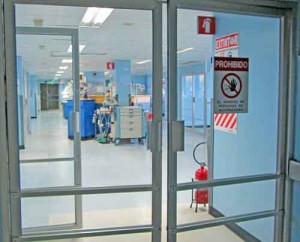 But, while it is focused on healthcare, you will learn a lot more about living and retiring in Costa Rica’s Central Valley. Most of the second day of the tour takes place in the town of San Ramón where we live and use the services. And you will come to our home for lunch that day to listen to two of our featured speakers. Our tour is designed to save you both time and money, packing a lot of information into a short period of time. Our goal is to show you the possibilities and to try to demystify Costa Rica’s healthcare system. Our tour lasts two days and 1 night and includes lodging, transportation, meals and non-alcoholic beverages.
But, while it is focused on healthcare, you will learn a lot more about living and retiring in Costa Rica’s Central Valley. Most of the second day of the tour takes place in the town of San Ramón where we live and use the services. And you will come to our home for lunch that day to listen to two of our featured speakers. Our tour is designed to save you both time and money, packing a lot of information into a short period of time. Our goal is to show you the possibilities and to try to demystify Costa Rica’s healthcare system. Our tour lasts two days and 1 night and includes lodging, transportation, meals and non-alcoholic beverages.
Sample Itinerary: You’ll visit:
- At least two private hospitals in San Jose area
- Hospital Mexico, the largest and best public hospital (they even do open heart surgeries there)
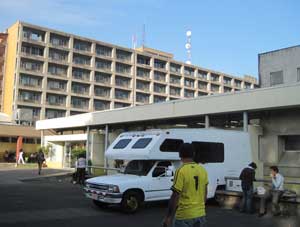
- An insurance broker for a presentation on the various supplemental health insurance options, including public, private, and international plans
- A senior living retirement community
- CPI language school for a presentation about how learning Spanish increases your options for healthcare and some basic medical Spanish.
- Our local hospital here in San Ramón
- A local EBAIS (community clinic)
- A local private medical and dental clinic
- A local Seguro Social office where you would sign up for the Caja (national healthcare coverage)
- A pharmacy
- A health food store (macrobiotica), and more!
 You’ll learn:
You’ll learn:
- If the Costa Rican healthcare system could meet your needs and put your mind to rest, once and for all, about this sensitive subject.
- About the public system and how it works, about the private healthcare system, and how you can use a combination of both to your advantage.
- About the EBAIS – where healthcare starts in Costa Rica.
- Approximately how much you would pay for Caja.
- About medical tourism in Costa Rica.
- About home health care in Costa Rica.
Introductory prices: $550 for a couple, $450 for a single.
Please contact us if you are interested in booking this tour. Space is limited.
Related Articles:
- Paul Gets a CAT Scan Through the Caja
- Integration 102 – Speaking Up at the Hospital
- Waiting to See the Doctor, by Jo Stuart
Applying for Permanent Residency in Costa Rica
Just yesterday, September 25, 2014, we applied for permanent residency status in Costa Rica. It turned out to be easier than we thought, though speaking Spanish was a great help.
The first thing we did was to visit the Migración office in Puntarenas, which is about an hour’s drive from our house. We live about the same distance away from the main office in San Jose, but chose to go to Puntarenas because it is much smaller and less crowded. When we asked what we needed to do to apply for permanent residency, they gave us a small piece of paper with the following printed on it:
Cambio de Categoria (Change of Category)
- Tener Cédula de Residencia Temporal x mas de 3 años. (Have a temporary residency card for at least 3 years.)
- Carta de Solicitud de cambio categoria. (A letter requesting a change of residency category.)
- Copia y original de Cédula residencia. (Your actual residency card and a copy of both the front and back.)
- Depósito Bancario por $200 CTA #242480-0 del BCR. (A bank deposit slip showing you have deposited $200 into the specified account at Banco Costa Rica. Note: this is actually a colones account; you give them $200 USD and the bank converts it into colones and deposits it into the account.)
In addition, though the note didn’t say to bring it, we completed a form that our friend Tom told us we would need. We downloaded it from this link, filled it out, and brought it along with everything else. It saved us time once we went back to Migración yesterday to file our paperwork. One important thing to note: All of the above needs to be done for each person, so if you are applying as a couple, you EACH need to bring everything, including the $200 deposit.
Here’s a quick video about the process which we made as we were leaving the Migración offices in Puntarenas:
Facebook, Twitter, & YouTube
![]()
![]()
![]() You can now follow us on Facebook and Twitter, so please “like” us on Facebook, “follow” us on Twitter, and watch and share our videos on YouTube.
You can now follow us on Facebook and Twitter, so please “like” us on Facebook, “follow” us on Twitter, and watch and share our videos on YouTube.
What’s New on the Website
Check out our newest posts on www.retireforlessincostarica.com:
- Our August 2014 Costa Rica Cost of Living Expenses
- Why the Higher Cost of Living in Costa Rica Is Worth It
- Testimonials: Tooting our Own Horn
- Monkey Rescue Misadventures: Mal Tiempo, Buena Cara
- In the Mailbag – August 27, 2014
- A Reader Learns Spanish at CPI Language School
- Questions and Answers: Getting Residency in Costa Rica and Joining the Caja
- The Truth about Living in Costa Rica: The Good, the Bad, and the Muddy, by Josh Linnes
- Were Costa Ricans Always Pura Vida? — Where History Meets the Movies
